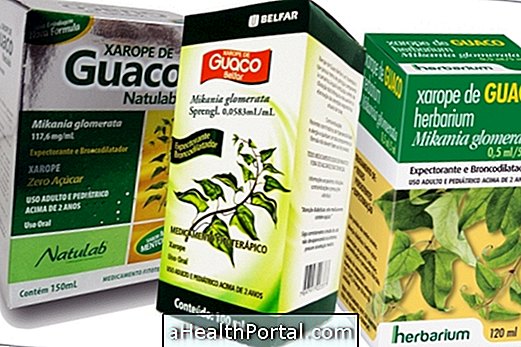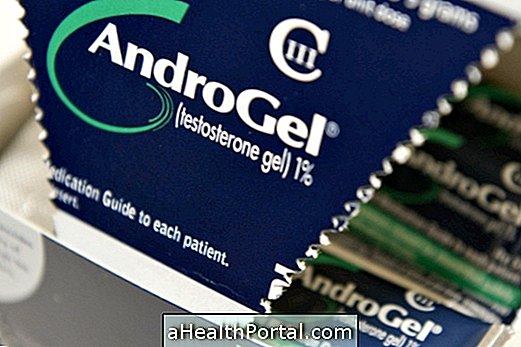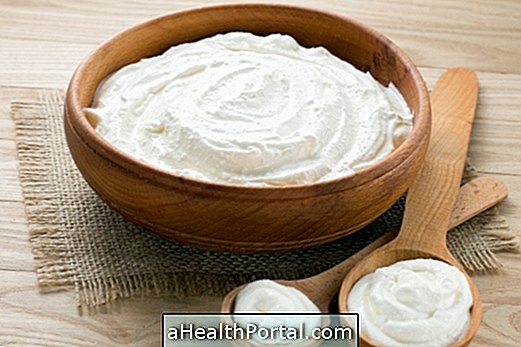Rheumatic fever is an autoimmune disease that causes inflammation in many tissues of the body, causing pain in the joints, nodules in the skin, heart murmur, muscle weakness and even involuntary movements.
It is triggered in predisposed people by the bacterium Streptococcus pyogenes, which causes infections such as pharyngitis and tonsillitis in children and adults.

Main symptoms
If Streptococcus pyogenes infection is not treated properly with antibiotics, by the pediatrician or general practitioner, the antibodies produced in the inflammation can attack various organs of the body, such as joints, heart, skin and brain.
Thus, in addition to fever, which can reach 39ºC, the main symptoms of rheumatic fever are:
- Joint Symptoms : Pain and swelling of joints such as knees, elbows, ankles and wrists, which have a migratory pattern, meaning this inflammation can alternate from one joint to another, and can last up to 3 months;
- Heart Symptoms : shortness of breath, tiredness, chest pain, cough, swelling in the legs and heart murmur can be caused due to inflammation of the valves and heart muscles;
- Neurological Symptoms : involuntary movements of the body, such as lifting arms or legs without the person's desire, are known as chorea. There may also be constant oscillation of mood, slurred speech, and muscle weakness;
- Symptoms of the skin : nodules under the skin or red spots, known as erythema marginatum.
The symptoms of rheumatic fever usually appear between 2 weeks and 6 months after infection by the bacteria, and can last for several months, depending on the correct treatment and immunity of each person. However, if the lesions caused in the heart are very severe, the person may have sequelae in cardiac functioning.
How is the diagnosis made?
The diagnosis of rheumatic fever is based on the presence of the main symptoms and physical examination of the patient, aided by some blood tests that demonstrate inflammation, such as HSV and CRP.
The presence of the antibody to the rheumatic fever bacterium, detected by examinations of throat and blood secretions, such as the ASLO test, which is important to confirm the infection by the bacteria and thus confirm the diagnosis. Understand how the ASLO exam is done.
How is the treatment done?
Rheumatic fever has a cure, and the treatment is done with the use of antibiotics, such as penicillin benzine or benzetacil, prescribed by the pediatrician or general practitioner. Already the symptoms of inflammation in the joints and heart can be alleviated with rest and use of anti-inflammatories, like ibuprofen and prednisone, for example.
In addition, home care, such as drinking lots of fluids and having a diet rich in vegetables, fruits and vegetables, are important to aid in the recovery of the body. Learn recipes from natural remedies for the treatment of inflammation and rheumatism.
Prevention of rheumatic fever
The prevention of rheumatic fever is very important to prevent the development of this disease and its sequelae. It can vary in 2 ways:
1. Prevention for those who have never had rheumatic fever
To avoid developing rheumatic fever, treatment of tonsillitis or pharyngitis caused by Streptococcus pyogenes should be done with the use of intramuscular benzetacil prescribed by the pediatrician or general practitioner so that this bacterium is eliminated from the body and does not cause the disease.
Alternatives for people who are allergic to penicillin are erythromycin or azithromycin, for example, also prescribed by the doctor.
2. Prevention for those who have had rheumatic fever
This type of treatment is done to try to eliminate the bacteria from the body, and prevent rheumatic fever from appearing again. In this case, monthly doses of benzathine penicillin should be given for at least 5 to 10 years, depending on the age of the patient or the severity of the disease.








.jpg)

















